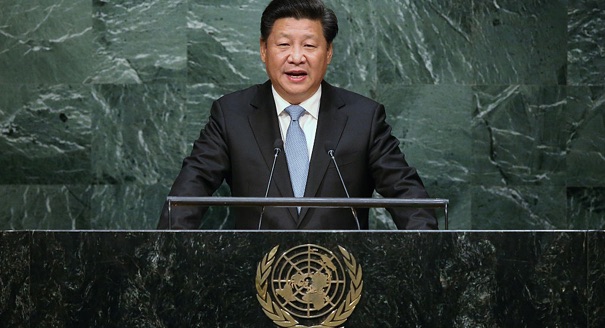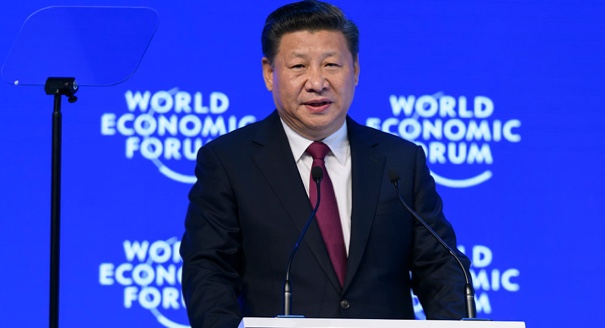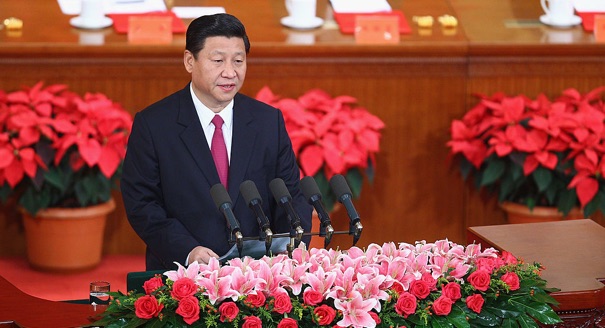Announced by China in late 2013, the Belt and Road Initiative (BRI) aims to build a trade and infrastructure network across sixty-five developing countries to connect Asia, Africa, and Europe along land- and sea-based routes. On May 14–15, 2017, China will host leaders and organizations from around the world in Beijing for the first ever Belt and Road Forum.
In this Q&A, Paul Haenle discusses the significance of the Belt and Road Forum for China’s role in the world and relations with the United States. The Chinese leadership hopes to use this opportunity to position Beijing as a leader of global development and to project a positive vision of globalization-driven growth.
- Why was the Belt and Road Initiative launched?
- How has this initiative been interpreted by Chinese and international observers?
- What does the Belt and Road say about Xi Jinping?
- Why is it important for China to engage the United States and other leaders of the developed world on this project?
- How does the Belt and Road Forum fit into Xi Jinping’s broader domestic and foreign policy strategies?
Why was the Belt and Road Initiative launched?
When Chinese President Xi Jinping first announced the BRI in 2013, it was framed as a broad vision to expand regional cooperation between China and Central Asian countries. The project promised to enhance regional connectivity, deepen trade and economic relations, and expand people-to-people ties between countries along the BRI. There was also a strategic component, which Xi described as a community of like-minded nations—united by geography; principles of sovereignty; and the common enemies of terrorism, extremism, and separatism—that would come together to form a more cohesive bloc.
How has this initiative been interpreted by Chinese and international observers?
The BRI enjoyed a very high-profile international rollout. But it was not until two years later, in March 2015, that China’s National Development and Reform Commission, Ministry of Foreign Affairs, and Ministry of Commerce released the first action plan to provide further guidance on its key principles, frameworks, priorities, and mechanisms. Even then, the symbolism of the initiative remained far ahead of the substance. In the interim, experts and observers from China, the United States, and the rest of the international community have proffered their views on the project and come to a range of conclusions.
In China, the BRI is portrayed as an economic initiative that will benefit the region—even the world—first and foremost, and benefit China second. Chinese scholars argue that bringing investment and development projects to neighboring countries will make the region more secure and prosperous. China would also benefit, of course. The initiative is a vehicle for Beijing to channel investment to China’s relatively poor western provinces and to export industrial overcapacity abroad, accelerating domestic economic restructuring.
But the accusation that the BRI is driven by political or geostrategic interests is roundly dismissed in China. It is viewed as an example of Western hypocrisy—the United States has called on China for years to accept more global responsibility yet, now that it has, China is being accused of undermining the international order. All China really wants, this explanation goes, is to complement the existing order with institutions that are more representative of current global conditions.
Outside of China, however, reactions to the BRI are mixed. While countries welcome Beijing’s generosity, they are simultaneously wary of its largesse. As was made clear in Xi’s speech inaugurating the initiative, countries along its routes should be connected not just by roads and rails but by political aims. China’s growing influence is a concern for nations whose political interests do not always align with Beijing’s.
Furthermore, for countries farther from the region, especially developed countries experienced with projects of such strategic magnitude, it is impossible not to view the BRI through a geopolitical lens—a Chinese effort to build a sphere of influence. There is an inherent duality in many BRI infrastructure projects, from foreign ports to dams. While ostensibly a commercial or soft power venture, the resulting infrastructure could have dual-use applications that would allow China to enhance its hard power projection.
What does the Belt and Road say about Xi Jinping?
The BRI is considered Xi’s most important initiative. It reflects several distinct characteristics of his leadership, including his ambition and confidence. The scale of the BRI is enormous by every metric. It spans dozens of countries (characterized by varying degrees of political stability) and involves coordination across a range of government ministries and party bodies in China. As someone who served on the U.S. National Security Council, the White House entity tasked with coordinating interagency policies, I can attest that such expansive initiatives require careful coordination and a coherent approach. The rewards of such an ambitious project would be enormous, but the risks are also great. The BRI’s success is not a forgone conclusion.
It is safe to say that Xi’s predecessors would not have embarked on such an undertaking. Xi is a different kind of Chinese leader. He has consolidated the power and legitimacy in the Chinese system necessary to pursue such an ambitious undertaking and has the confidence to lead a new initiative on the world stage. The BRI and other new initiatives Xi has launched mark a major departure from former leader Deng Xiaoping’s foreign policy dictum of taoguang yanghui—keeping a low profile on the international stage and avoiding involvement in faraway issues. Instead, Xi sees his more active, ambitious, and confident style of leadership as directly linked to the goal of achieving the great rejuvenation of the Chinese nation.
Why is it important for China to engage the United States and other leaders of the developed world on this project?
China needs to recognize that the way it perceives the BRI is not necessarily the same way others do. Chinese officials stress that the Belt and Road Initiative is aimed primarily at developing nations. But if China does not proactively engage with developed nations on its objectives for the BRI, it risks these nations projecting their worst fears onto the initiative. Some states may have different views on issues related to the BRI and about what is required to enhance the region’s security and prosperity in the long term. The initiative is a key component of China’s diplomatic agenda that is wide and sweeping in scope; it is important that China communicate actively with the United States and other countries on the project—not just about what the BRI means but also about how the United States and other developed nations can be involved.
The United States also needs a strategy for constructive engagement with the BRI. Washington must avoid repeating the mistakes it made in responding to the Asian Infrastructure Investment Bank (AIIB). By actively shunning the development bank, the United States isolated itself from the international community and weakened its own leverage to shape the new body. Furthermore, Washington appeared hypocritical and insecure about the strength of its own leadership. While the United States is right to view Chinese behavior that is opaque and poorly defined with a critical eye —and justified to be concerned about what rules will be set for the BRI—its attitude should not be hostile.
Washington needs a more effective, middle-ground approach to the BRI that involves seeking collaboration with China and other nations where interests overlap. U.S. companies should be asking Chinese leaders: what opportunities does the BRI offer, what are the rules, and how can we get involved? U.S. leaders and officials should reach out in formal dialogues, such as the recently announced U.S.-China Comprehensive Dialogue. The two countries can talk about the BRI’s aims and key components, examine where their interests could intersect or clash, and seek to make the Belt and Road Initiative a formal topic of bilateral discussions. Not having open and effective communication runs the risk of misinterpretation.
How does the Belt and Road Forum fit into Xi Jinping’s broader domestic and foreign policy strategies?
There are two main messages that Xi hopes to send at the upcoming Belt and Road Forum. The first is to a Chinese domestic audience. In the lead-up to the Nineteenth Party Congress this fall, Xi needs to demonstrate his international leadership credentials and prove that he can defend China’s interests on the world stage. He has embarked on a global campaign to that end, which began in January 2017 at the World Economic Forum in Davos, where Xi (the first Chinese leader to ever attend) gave a keynote speech that heralded the importance of upholding economic globalization. It continued last month at Mar-a-Lago, where Xi appeared in control of his meeting with U.S President Donald Trump, helping to stabilize China’s most important bilateral relationship.
The Belt and Road Forum is therefore only one among a series of important opportunities this year for Xi to showcase his leadership credentials in the run-up to the all-important Chinese Communist Party leadership transition. Following the Belt and Road Forum, Xi will travel to Hong Kong in July to mark the twentieth anniversary of its return to Chinese sovereignty, and then he will attend the G20 leaders meeting in Hamburg, Germany. In August, he will oversee a high-profile military parade to celebrate the ninetieth anniversary of the People’s Liberation Army and underscore its restructuring and modernization under his leadership. Xi will convene the 2017 BRICS summit in September in the Chinese city of Xiamen, where he formerly served as vice mayor.
Xi’s other message at the Belt and Road Forum is to the international community. He is expected to echo many of the themes from his Davos speech—in which he championed globalization and free trade—and position China as the leader of global development. He could use the forum’s international platform to push back against protectionism and attempt to establish a positive narrative for global growth and economic development under China’s leadership. This so-called new type of globalization, or globalization 2.0, will be framed as an Eastern-led initiative that is more inclusive and equitable than the brand of globalization currently being rejected across the Western world.
The United States and other developed countries are unlikely to embrace these narratives, but the symbolism is nevertheless significant. The world is witnessing a China that is now capable and willing to use the international system, which the United States helped to create, as a platform for its own institutions and initiatives—the BRI being one of them. These Chinese initiatives leverage globalization in a way the United States never previously imagined. It marks a new phase in China’s role in the world and Washington’s relationship with the rising Pacific power.

Xi becomes core leader
October 27The Communist Party anointed President Xi Jinping “core leader,” a title that doesn’t grant additional powers or responsibilities but suggests Xi has further consolidated power and influence within the party. He is only the fourth Chinese leader to be designated a core leader, after Mao Zedong, Deng Xiaoping, and Jiang Zemin.

Xi becomes the first Chinese leader to attend Davos
January 17Xi cautioned other nations at the World Economic Forum in Davos against isolationism and protectionism, urging them “not [to] retreat into the harbor whenever we encounter a storm or we will never reach the opposite shore.”

Xi meets Trump at Mar-a-Lago
April 6U.S. President Donald Trump and Xi met for their first summit at Mar-a-Lago in Palm Beach, Florida, where they discussed the North Korean nuclear weapons program and bilateral trade and investment relations.

Xi anchors key Belt and Road Forum
May 14Heads of state from twenty-eight nations will converge on Beijing for China’s first official international forum on the Belt and Road Initiative. Xi is expected to address China’s approach to development and present further specifics on how to fund infrastructure projects across Eurasia.

Beijing celebrates the 20th anniversary of Hong Kong's return to the mainland
July 1Just months after the election of pro-Beijing Chief Executive Carrie Lam, Xi will travel to Hong Kong for the first time as president to commemorate the 20th anniversary of its return to China from the United Kingdom in 1997.

G20 nations meet in Hamburg, Germany
July 7Xi will hand the G20 reins to German Chancellor Angela Merkel, who will host this year's summit in Hamburg. The summit will provide Xi with an opportunity to burnish his image as an international leader and advocate of free trade and globalization.

The PLA celebrates its 90th anniversary
August 1Beijing is expected to hold a large-scale military parade to celebrate the 90th anniversary of the People's Liberation Army, which will give Xi an opportunity to demonstrate China’s military modernization to the international community.

BRICS nations converge in Xiamen
September 3The 9th BRICS summit will convene in September in the Chinese coastal city of Xiamen, where Xi previously served as deputy mayor early in his political career. It will focus on strengthening and reforming global governance.

The Chinese Communist Party holds its 19th National Congress
October/NovemberXi is expected to be elected to his second five-year term as general secretary of the Communist Party. The Politburo Standing Committee, China’s highest political body, is likely to see significant changes as five of its seven members reach the age limit for party service.
